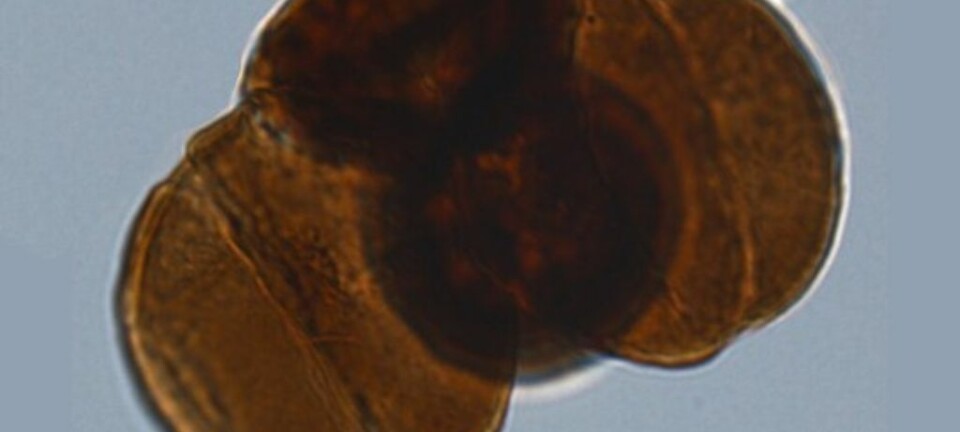This article was produced and financed by BI Norwegian Business School

Intuition and analytical skills matter most in a crisis
People who prefer to combine quick, intuitive decisions with analysis, make the best decisions in a crisis situation, a new study shows.
Denne artikkelen er over ti år gammel og kan inneholde utdatert informasjon.
Many organisations depend every day on the ability of their leaders and staff to make good decisions in crisis situations. This is true for the armed forces, police, fire brigade, hospitals and other emergency services.
Unfortunately, crises do not only occur in emergency service organisations. Any type of organisation may be faced with various kinds of crises and must prepare to handle them in the best possible way.
In a real crisis there will be strong time pressure and great uncertainty, and much will be at stake.
Researcher Bjørn T. Bakken has looked at what is needed to make good decisions in crisis situations. He has been particularly keen to look at the outcome of different styles of decision-making.
Intuition and analysis
Bakken distinguishes between two main styles of decision-making: intuitive and analytical.
- Intuitive decision style: The ability to make quick decisions when time is short, based on previous experience. This does not mean decisions are made haphazardly, or merely on a gut feeling. An intuitive decision style is developed through experience.
- Analytical decision style: Making decisions in a thorough, systematic manner. Spending time reviewing all the details and making sure all decisions comply with formal guidelines and requirements. For the novice and the inexperienced, analysis is a necessary tool in decision-making.
Although an individual may tend to prefer one decision style above the other, it is not necessarily a matter of either/or.
A good chess player will often see his next move straight away due to experience, but he or she will still use the time available to analyse potential outcomes of this move. Frequently, but not invariably, the piece will be moved in accordance with the quick, intuitive decision.
Decisions in simulated crises
The BI researcher has developed a simulator were test participants must make decisions in different types of crises, such as natural disasters, major accidents and terrorist attacks.
Each participant is placed in front of a computer in the laboratory. The monitor shows a map where various types of incidents pop up during the 30 minute test. The participants have different kinds of resources available to them, like planes, cars and other vehicles, which they must use as best they can. Decisions must be made under time pressure and in critical situations.
More than 300 students from BI Norwegian Business School and the Norwegian Military Academy have tested their skills on the simulated crisis situations. A further 500 participants have solved various kinds of decision-making problems.
Bakken has looked at the connections between the participants’ preferred decision style, how they in fact made their decisions, what decisions they made, and the quality and outcome of their decisions. The preferred decision style of those who took part in experiments and problem-solving exercises was identified.
Intuition and analysis
Who made the best decisions?
“Those who normally prefer combining intuitive decisions with analysis made the best decisions in the crisis situations,” Bakken concludes.
In other words, the participants who made the best decisions scored high on both the intuitive and the analytical styles of decision-making.
“In a real crisis, you simply don’t have time to wait for sufficient information to build up a picture and analyse the situation. You need to make the initial decisions quickly, based on your experience-based intuition. As you receive more information, you can analyse your way to adjustments and more decisions.
Those who make the best decisions in a crisis practise a flexible decision style that switches between intuition and analysis,” the researcher points out.
His study also shows a lot of correlation between the participants’ preferred decision style and how they actually make decisions in the crisis simulation test.
Advice to leaders
Based on his PhD study, Bakken has identified six pieces of practical advice for leaders and staff concerning decisions in a crisis situation:
- The organisation needs to show that it values the work of each emergency response staff member and the experience he or she is accumulating.
- Staff must be encouraged to make decisions based on their experience combined with analysis. If you are short of time, you need to trust your intuition. If you have time to combine intuition with analysis, then do so.
- Most of us can develop an intuitive decision style by practising (i.e. by gaining experience).
- Crisis handling exercises should be organised so that they encourage and require quick, intuitive decisions based on experience, rather than just testing people’s ability to analyse and comply with established guidelines.
- Organisations need good leadership, not more control, in order to develop the staff’s ability to make good decisions in a crisis.
- It must be understood and accepted that during a crisis staff may make decisions that later on prove to be wrong. Leaders have a responsibility to develop a learning culture in the organisation.
Reference:
Bjørn T. Bakken: Intuition and analysis in decision making. On the relationships between cognitive style, cognitive processing, decision behaviour, and task performance in a simulated crisis management context, Series of Dissertation 9/2013. BI Norwegian Business School.

































